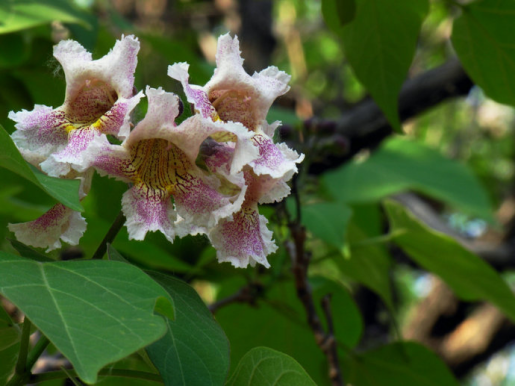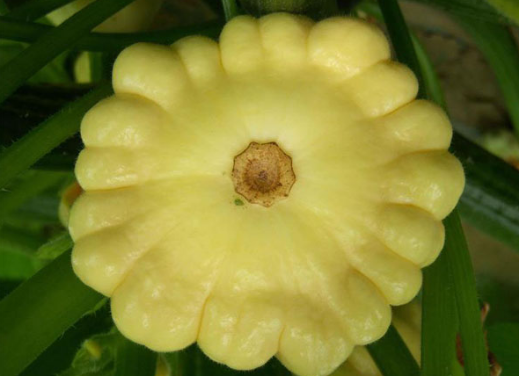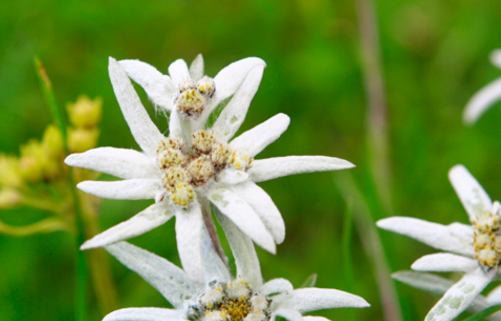Culture method of Catalpa chinensis
1. Basic knowledge of Catalpa chinensis Culture
Growing soil: deep, fertile, moist soil.
Humidity requirements: humidity should be kept between 68-79%.
Temperature requirements: annual average temperature of 10-15 ℃ environment.
Lighting requirements: plenty of sunlight.
two。 Watering
Catalpa trees have strict requirements on water quantity, which must be paid attention to in daily maintenance. For seedlings planted in spring, the first three water should be watered first, and then twice in May, June, September and October; if it is not dry in July and August, it can not be watered; in December, it should be watered thoroughly. In the early spring of the second year, the green water should be poured back in time, twice from April to October, and fully watered at the beginning of December. In the third year, it was watered according to the method of the second year. In the fourth year, in addition to watering the green water in early spring and the anti-freezing water in early December, there is no need for watering. It is entirely possible to rely on natural precipitation for growth, and only a small amount of watering is carried out when the weather is too dry.

3. Fertilizer application
In addition to applying sufficient base fertilizer at the beginning of planting, fertilization should be carried out around December of each year, some urea should be applied in early May, and some phosphorus and potassium fertilizer should be applied in late July.
4. Pruning
Catalpa has a strong sprouting power, and the trunk often produces new buds during the growing period. in order to avoid consuming too much nutrients, it should be pruned and removed in time. Usually, the drooping branches, cross branches, over-dense branches, disease and insect branches, dry and withered branches of Catalpa should be pruned.
If you do a good job of the above four points, Juglans mandshurica will be full of vitality and the fragrance of flowers will be overflowing. So, how do catalpa trees grow so luxuriantly under meticulous farming? The editor will tell you something about it.
Culture methods and matters needing attention of Catalpa chinensis
Planting of Catalpa chinensis
The planting of catalpa trees can be carried out in spring and autumn. Planting holes should be dug before planting, and planting with soil balls can improve the survival rate, but we should also be careful not to plant too deep, which will lead to muggy buds. When planting, we should also apply some mature base fertilizer and mix it with the planting soil, water once after planting, and then water again after three days and five days.
Water and Fertilizer Management of Catalpa chinensis
In the daily maintenance, attention should be paid to the water management of catalpa trees. In addition to the first three water after planting, we should also choose to water twice between May and October. When there is more precipitation in summer, if it is not too dry, we do not need watering, and we should also apply anti-freezing water in winter. Just pour the green water and antifreeze water after four years of the plant. In addition, catalpa trees like fertilizer, apply sufficient base fertilizer when planting, and apply some urea in May, which can make the plant luxuriant branches and leaves and accelerate the growth.
Shaping and pruning of Catalpa
Because the catalpa tree has strong sprouting power, it is resistant to pruning. When the new branches reach about 30 cm in spring, the suitable main branches will be cut off, and the newly drawn buds should also be erased during the growing period. If you want to expand the crown, it is necessary to truncate the main branch and leave the outer bud.
Matters needing attention in Catalpa Culture
Catalpa trees are also vulnerable to the threat of diseases and insect pests, common pests are bug bugs, moth, paulownia tortoise shell, catalpa beetle wild borer and so on, which can be controlled by spraying insecticidal agents. In addition, the common disease of catalpa tree is anthracnose, which is easy to occur under the condition of high temperature and poor ventilation, so in addition to spraying pesticides, we should also pay attention to the water and fertilizer management of catalpa tree to improve the disease resistance of the plant.
The culture methods and matters needing attention of catalpa trees, and how to raise catalpa trees
The flower bonsai net guide reads, today the flower bonsai net editor comes to share with you the catalpa tree breeding method and the notice article, how to raise the catalpa tree, has the flower friends who like to cultivate catalpa tree to have a look together.
Catalpa has a lot of use value, such as ornamental value, ecological value and so on, so how on earth should we breed the catalpa tree? What are the matters needing attention in the process of breeding?
Planting of Catalpa chinensis
The planting of catalpa trees can be carried out in spring and autumn. Planting holes should be dug before planting, and planting with soil balls can improve the survival rate, but we should also be careful not to plant too deep, which will lead to muggy buds. When planting, we should also apply some mature base fertilizer and mix it with the planting soil, water once after planting, and then water again after three days and five days.
Water and Fertilizer Management of Catalpa chinensis
In the daily maintenance, attention should be paid to the water management of catalpa trees. In addition to the first three water after planting, we should also choose to water twice between May and October. When there is more precipitation in summer, if it is not too dry, we do not need watering, and we should also apply anti-freezing water in winter. Just pour the green water and antifreeze water after four years of the plant. In addition, catalpa trees like fertilizer, apply sufficient base fertilizer when planting, and apply some urea in May, which can make the plant luxuriant branches and leaves and accelerate the growth.
Shaping and pruning of Catalpa
Because the catalpa tree has strong sprouting power, it is resistant to pruning. When the new branches reach about 30 cm in spring, the suitable main branches will be cut off, and the newly drawn buds should also be erased during the growing period. If you want to expand the crown, it is necessary to truncate the main branch and leave the outer bud.
Matters needing attention in Catalpa Culture
Catalpa trees are also vulnerable to the threat of diseases and insect pests, common pests are bug bugs, moth, paulownia tortoise shell, catalpa beetle wild borer and so on, which can be controlled by spraying insecticidal agents. In addition, the common disease of catalpa tree is anthracnose, which is easy to occur under the condition of high temperature and poor ventilation, so in addition to spraying pesticides, we should also pay attention to the water and fertilizer management of catalpa tree to improve the disease resistance of the plant.
How to prune the catalpa tree
Catalpa is a kind of ornamental plant with long life and strong adaptability, so how should we prune it in order to keep it alive for a longer time? Now let the editor introduce to you the pruning method of catalpa tree.
Pruning of catalpa in spring
The catalpa tree will sprout new branches in spring. When the new branches grow to about 30 cm, you can select the branches near the top, and then select the strong branches distributed on different growth tracks as the main branches, and then cut off all the rest of the branches. In addition, in the growth period of catalpa tree, its trunk will sprout, which should be erased in time, otherwise it will consume too much nutrients and affect the growth. Wait until the next spring, as long as the new twigs on the main branch are screened and two new branches can be retained.
Pruning of catalpa in autumn
The growth rate of the new branches of catalpa is very fast. After the leaves fall at the end of autumn, the main branches left before should be cut short, 40-60 cm should be retained, and then some outer buds will be retained, otherwise the crown of Catalpa will be narrow and the shade area will be small. Therefore, if you want to expand the crown, you must pay attention to retaining certain buds. It will be cut short at the end of the next autumn to retain the outer buds, and then the tree shape will slowly form.
Pruning of Catalpa in the process of maintenance
Therefore, the catalpa tree is resistant to pruning and strong sprouting power, so it is necessary to do a good job of pruning in spring and autumn in the daily maintenance, so as to reduce the pruning burden in the coming spring and autumn, and only need to do a good job of pruning cross branches, over-dense branches and disease and insect branches in the future maintenance.
The above is the method of pruning the catalpa tree, as long as you grasp a certain way of pruning, the growth of the catalpa tree does not have to worry about.
Propagation methods of Catalpa chinensis
Catalpa has strong air purification ability and great ornamental ability, but the reproduction of catalpa is more complex, so let me introduce the breeding methods of catalpa.
Sowing and Propagation of Catalpa
The first important thing for sowing and reproduction is to collect seeds from the catalpa trees that are more than 20 years old, then dry them and store them. The next step is to soak the seeds, soak them in about 30 ℃ of warm water for 4 hours before sowing, then dry them, then mix the seeds with wet sand and wait for them to sprout. In the meantime, it is necessary to sprinkle water regularly and turn it over, so that the internal and external humidity is uniform, and the seeds can be sown after opening.
Grafting Propagation of Catalpa chinensis
The grafting of catalpa can be carried out in winter or spring, and the bud grafting can be carried out in spring or late autumn. In winter, it can be stored in wet sand after indoor grafting, and then planted in early spring. It is better to be grafted before and after the Qingming Festival, and the survival rate of sealing soil is higher. In addition, split grafting can be carried out, that is, the scions and rootstocks are prepared, and the cambium is tied up with hemp rope and plastic rope, and sealed with wet soil. It can sprout in about 10 days.
Root-burying Propagation of Catalpa
The root-burying propagation of catalpa can be selected in late March. 1-2 cm root strips are selected on the well-growing catalpa tree, with a length of 12-20 cm. The incision should be smooth, it should be obliquely buried in the soil, and when burying the roots, press the surrounding soil to make it tight, and then water it thoroughly.
Propagation of Catalpa chinensis by flat burial method
Flat burying, as the name implies, is to put the roots flat into the soil to make the soil firm, sprout about 20 days after burying, and then remove tillers, leaving only one well-growing branch on each.
- Prev

The planting method of flying dish melon
Key points for cultivation UFO melon prefers a warm environment, and the suitable temperature for its growth is generally 13 ℃ ~ 28 ℃. If the ambient temperature is more than 30 ℃, it will lead to melons. If the ambient temperature is lower than 10 ℃, the melons will stagnate. Flying saucer melons like light, so both open field cultivation and protected cultivation of flying saucer melons can adapt.
- Next

Culture methods of Edelweiss
1. Edelweiss is suitable for growing in loose and fertile humus soil, so it is best to choose fertile soil with rotten leaves in basin soil. Don't let it go after sowing. Seedlings are needed after emergence, and potted plants can be moved when the plant has 3 true leaves. During the growing period, the basin soil should not be too wet, but the basin soil should be slightly moist. Fertilize once a month
Related
- Fuxing push coffee new agricultural production and marketing class: lack of small-scale processing plants
- Jujube rice field leisure farm deep ploughing Yilan for five years to create a space for organic food and play
- Nongyu Farm-A trial of organic papaya for brave women with advanced technology
- Four points for attention in the prevention and control of diseases and insect pests of edible fungi
- How to add nutrient solution to Edible Fungi
- Is there any good way to control edible fungus mites?
- Open Inoculation Technology of Edible Fungi
- Is there any clever way to use fertilizer for edible fungus in winter?
- What agents are used to kill the pathogens of edible fungi in the mushroom shed?
- Rapid drying of Edible Fungi

